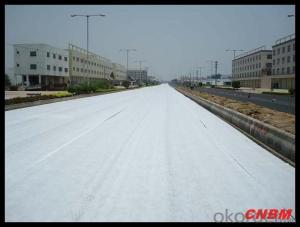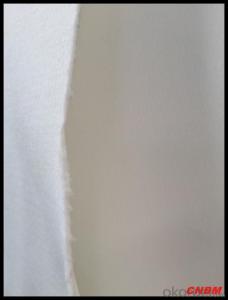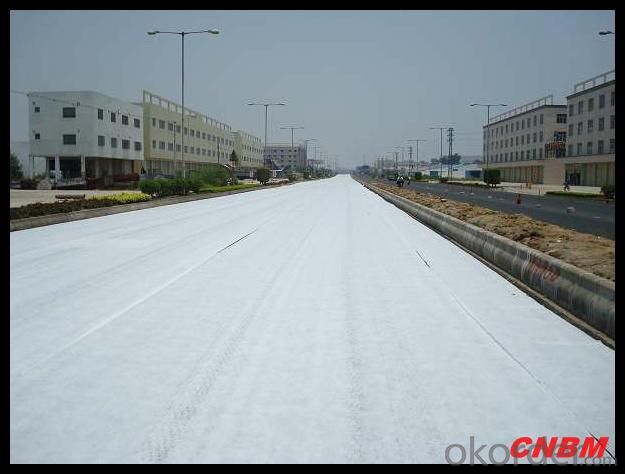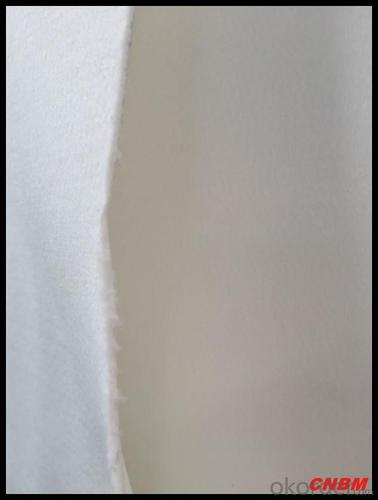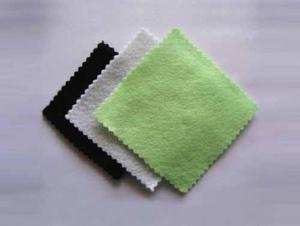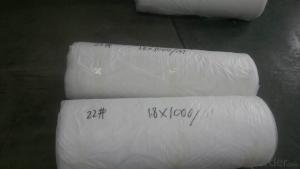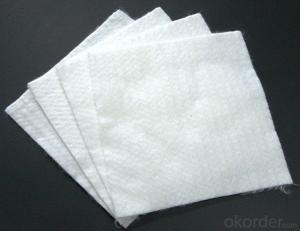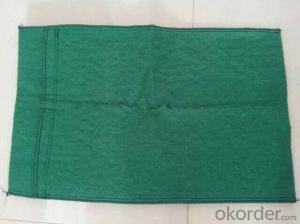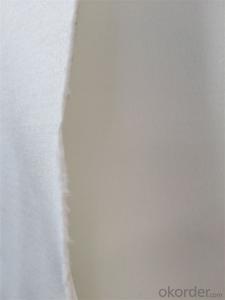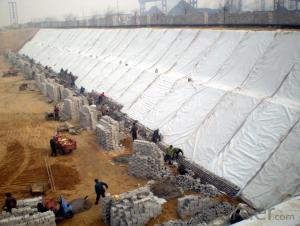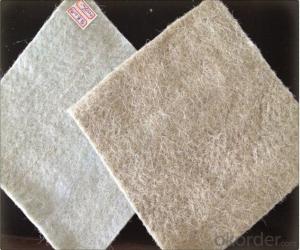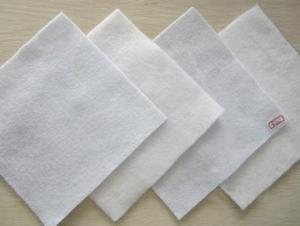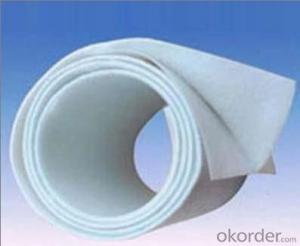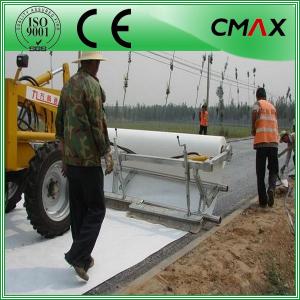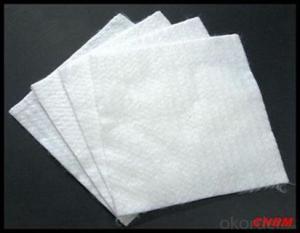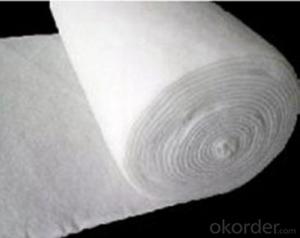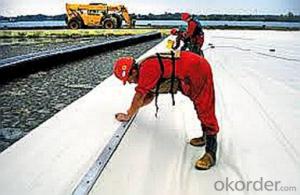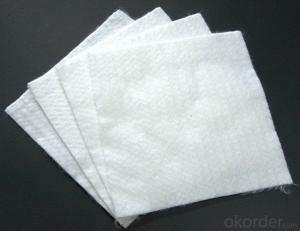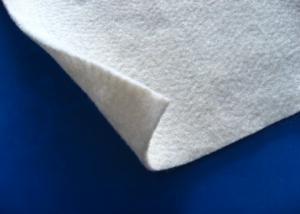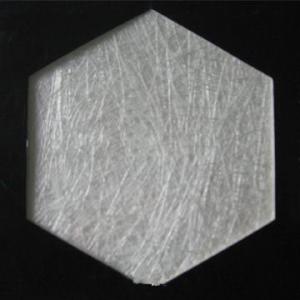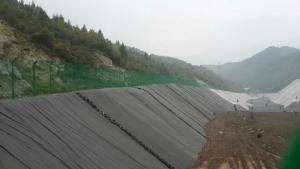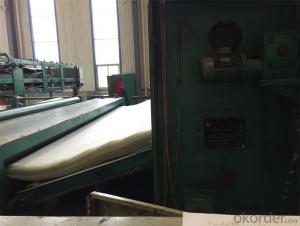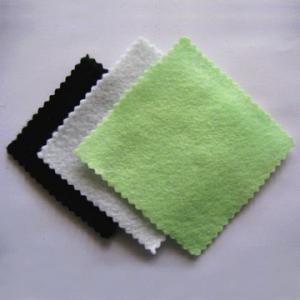Geotextile Drainage Membrane - Polypropylene Nonwoven Geotextile for Construction
- Loading Port:
- China main port
- Payment Terms:
- TT OR LC
- Min Order Qty:
- 2000 m²
- Supply Capability:
- 100000 m²/month
OKorder Service Pledge
OKorder Financial Service
You Might Also Like
Specification
Applications:
1) Filtration :
The filtration layer of the dykes, river canal, seacoast, concrete slope, retaining walls. At the same time of preventing the clay granule from passing, it allows the water and the gas pass through freely.
2) Separation :
The isolation of the railway dregs and the roadbed, roadbed and the soft base, surface of the airdrome and parking lot and the groundsill, different dam materials. It isolates the soil and the gravel of two kinds different granule pathway from the groundsill or other buildings.
3) Adding muscle :
The highway, railway, soil-stone dam, breakwater, airport, backfill soil of retaining wall, slope protection, etc in which distributes the earth stress, prevents the side-displacement of the earth body and improves the earth body stability.
4) Protection :
It prevents the bank from being washed out, protects the bank and the bottom, prevents the water and soil from being washed away.
Packing and shipping:
♦ Packing:in plastic film bag(keep away from moisture) and PP bag or as your customize.
♦ Shipping:By sea or as your customize
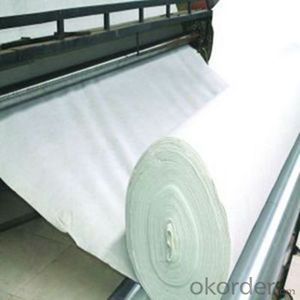
Packaging & Shipping
Packing: PLASTIC FILM INSIDE, AND WOVEN BAG OUTSIDE
Shipping: About 15 days after receipt the deposit
pecifications
geotextile fabric
permeability,filtration,easy for construction
ISO and CE certificate
Good quality and competitive price
Our Service
Quality assurance
1.On a regular basis or as per your request,we entrust national testing agencies to conduct quality inspections
2. Strictly in accordance with the ISO9001-2008 international quality system standard,we monitor and manage the whole process throughout production,quality testing,and measurement to ensure product quality
3. For quality-related construction delay or substandard construction(except for damage or losses due to customer’s responsibility or irresistible natural disasters),we have refunding,replacement,and repair services.We will respond to customers’ feedbacks on quality issues within 24 hours.
FAQ:
Q: What kind of payments does jenor support?
A: T/T, L/C, Cash are accepted.
Q: Do you charge for the samples?
A: Accordeing to our company policy, the samples are free, we only charge the freight fee. And we will return the freight fee during the next order.
Q: Can you produce according to customers' design?
A: Sure, we are professional manufacturer, OEM and ODM are both welcome.
Q: Do you have other products?
A: Yes, please check the pictures:
- Q: Garden engineering. Do the roof of the hydrophobic board and geotextile roof, would like to know the hydrophobic board and geotextile "sub-project name" and "hidden project"
- Weiyu geotextile has excellent filtration, drainage, isolation, reinforcement, anti-seepage, protective effect, with light weight, high tensile strength, good permeability, high temperature, anti-freeze, anti-aging, corrosion resistance.
- Q: What are the key considerations for geotextile installation in high wind areas?
- There are several key considerations for geotextile installation in high wind areas. First and foremost, it is important to select a geotextile material that is specifically designed to withstand high wind loads. This may involve choosing a heavy-duty geotextile with a high tensile strength and puncture resistance. Additionally, proper anchoring is crucial in high wind areas to prevent the geotextile from being lifted or displaced. This may involve using batten bars, sandbags, or other secure anchoring methods. It is also important to ensure proper overlap and seam construction to maintain the integrity of the geotextile system. Regular inspections and maintenance should be conducted to identify any potential damage or issues caused by the high wind conditions and address them promptly. Overall, careful planning and implementation are essential to ensure the effectiveness and longevity of geotextile installation in high wind areas.
- Q: What are the different geotextile durability test methods?
- There are several geotextile durability test methods used to assess the performance and longevity of geotextile materials. Some of the commonly used test methods include ASTM D4355 (Oxidative Induction Time), ASTM D1777 (Hydrostatic Puncture Resistance), ASTM D4533 (Trapezoidal Tear Strength), ASTM D4751 (Apparent Opening Size), ASTM D4759 (UV Stability), and ISO 12956 (Cyclic Load Test). These tests evaluate factors such as resistance to oxidation, puncture resistance, tear strength, opening size, UV stability, and cyclic load performance, providing insights into the durability and suitability of geotextile materials for specific applications.
- Q: How do geotextiles help with load support in unpaved roads?
- Geotextiles help with load support in unpaved roads by providing a stable base and preventing the mixing of different soil layers. They act as a barrier between the road surface and the underlying soil, distributing the load evenly and reducing the risk of rutting and deformation. Additionally, geotextiles enhance the drainage capabilities of the road, improving its overall strength and durability.
- Q: What are the design considerations for geotextile-reinforced pavement systems?
- Some key design considerations for geotextile-reinforced pavement systems include the selection of appropriate geotextile material, proper installation and placement techniques, adequate load-bearing capacity, effective drainage systems, and long-term durability. Additionally, factors like soil type, traffic volume, climate conditions, and the desired lifespan of the pavement should also be taken into account during the design process.
- Q: We are scrambling to sell geotextiles, recommended geotextile. What is the principle of geotextile seepage? Why can geotextile seepage? More
- Geotextile definition is too broad, and anti-seepage is mainly refers to the PE film
- Q: What is the length of the lap in the geotextile in the tunnel?
- General 20cm can be, I produce geotextile materials
- Q: What are the installation techniques for geotextiles?
- There are several installation techniques for geotextiles, depending on the specific application. Common techniques include anchoring the geotextile with pins or stakes, using mechanical or adhesive methods to secure overlapping sections, and incorporating it into the soil through tilling or mixing. The choice of installation technique will depend on factors such as the intended function of the geotextile, the site conditions, and the desired longevity of the installation.
- Q: Geotextile how the weight of how many meters
- Cut with a pair of scissors 1 square meters, and then weighed, the total weight ÷ weight per square meter ÷ geotextile width = length meter (because the weight of geotextile deviation, the calculation results can only be roughly the same, not subject)
- Q: Google for a long time only geotextile ads! The The Do not know geotextile, drainage board such materials, in what kind of shop which has to sell? Because the building materials market to a circle, people did not sell this thing more
- I professional production of drainage board, geotextile, geomembrane and other products, wish smooth
Send your message to us
Geotextile Drainage Membrane - Polypropylene Nonwoven Geotextile for Construction
- Loading Port:
- China main port
- Payment Terms:
- TT OR LC
- Min Order Qty:
- 2000 m²
- Supply Capability:
- 100000 m²/month
OKorder Service Pledge
OKorder Financial Service
Similar products
Hot products
Hot Searches
Related keywords
